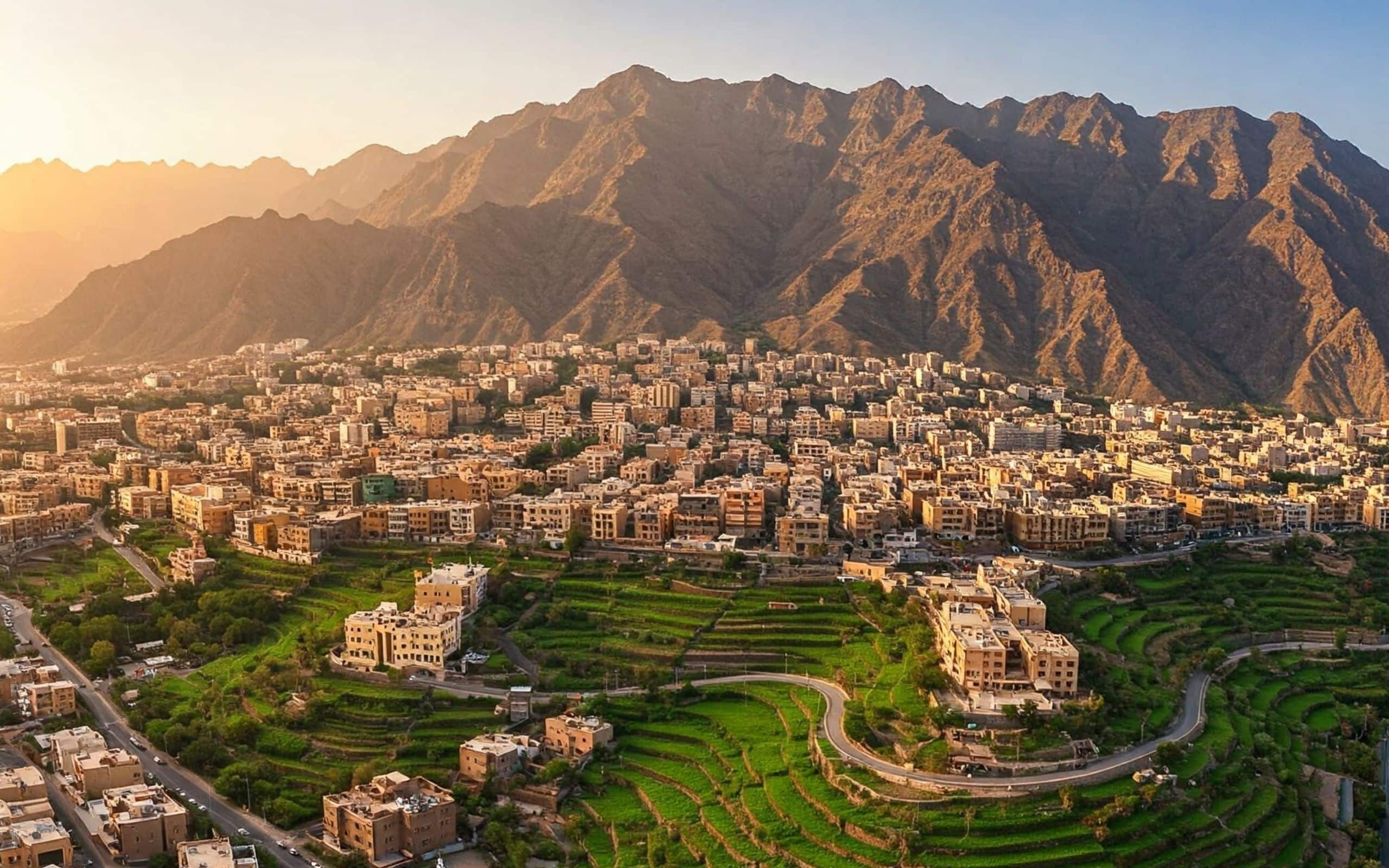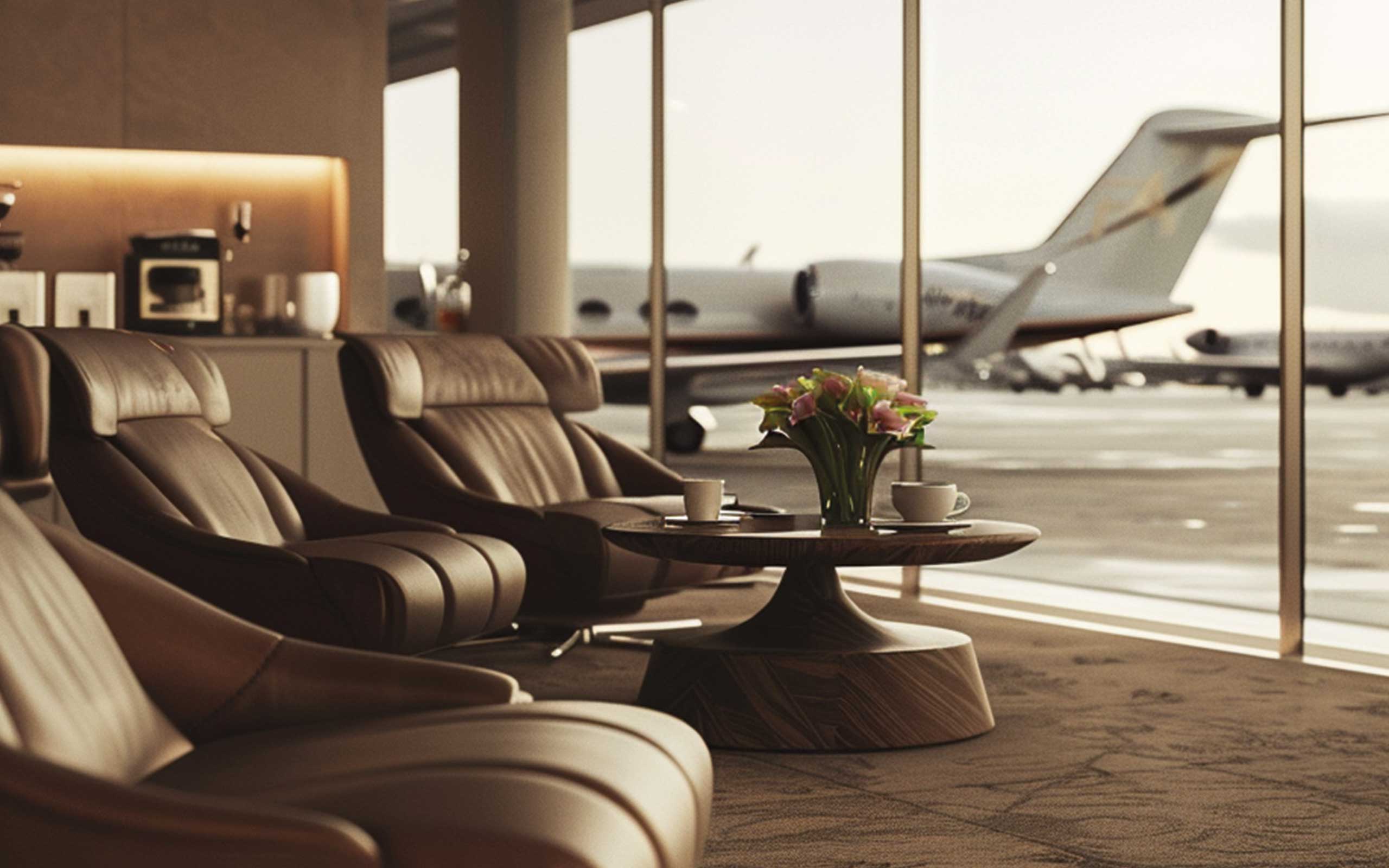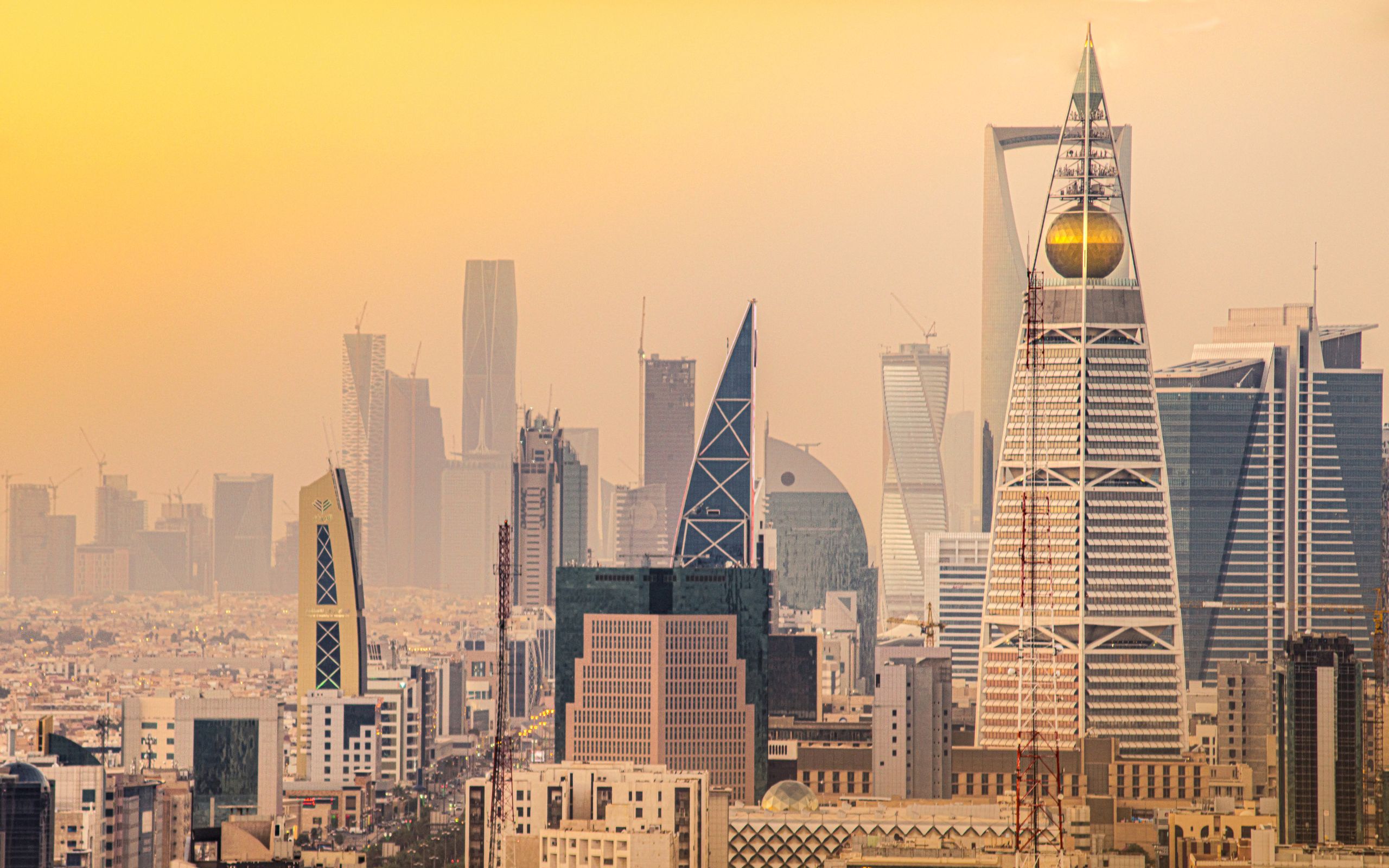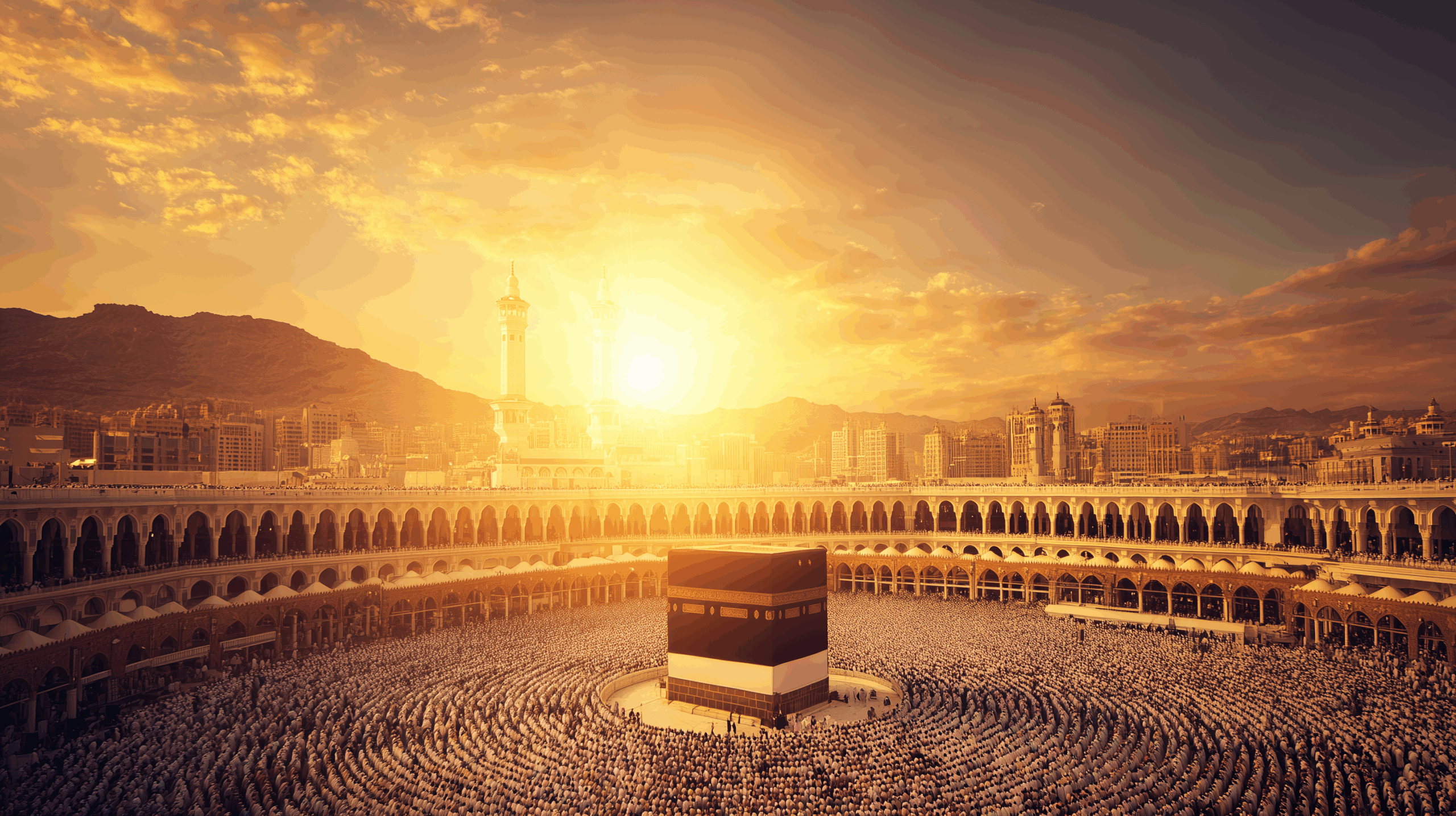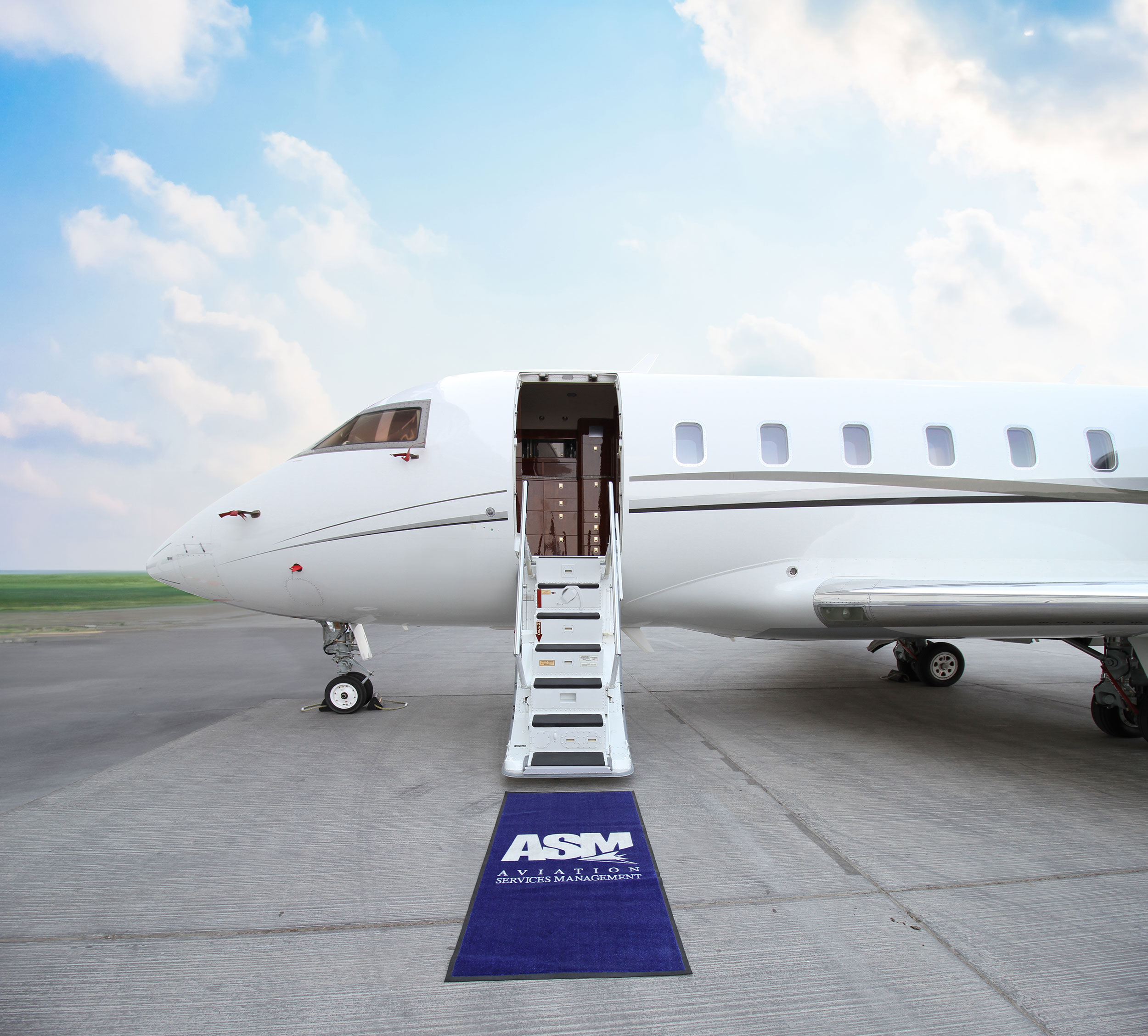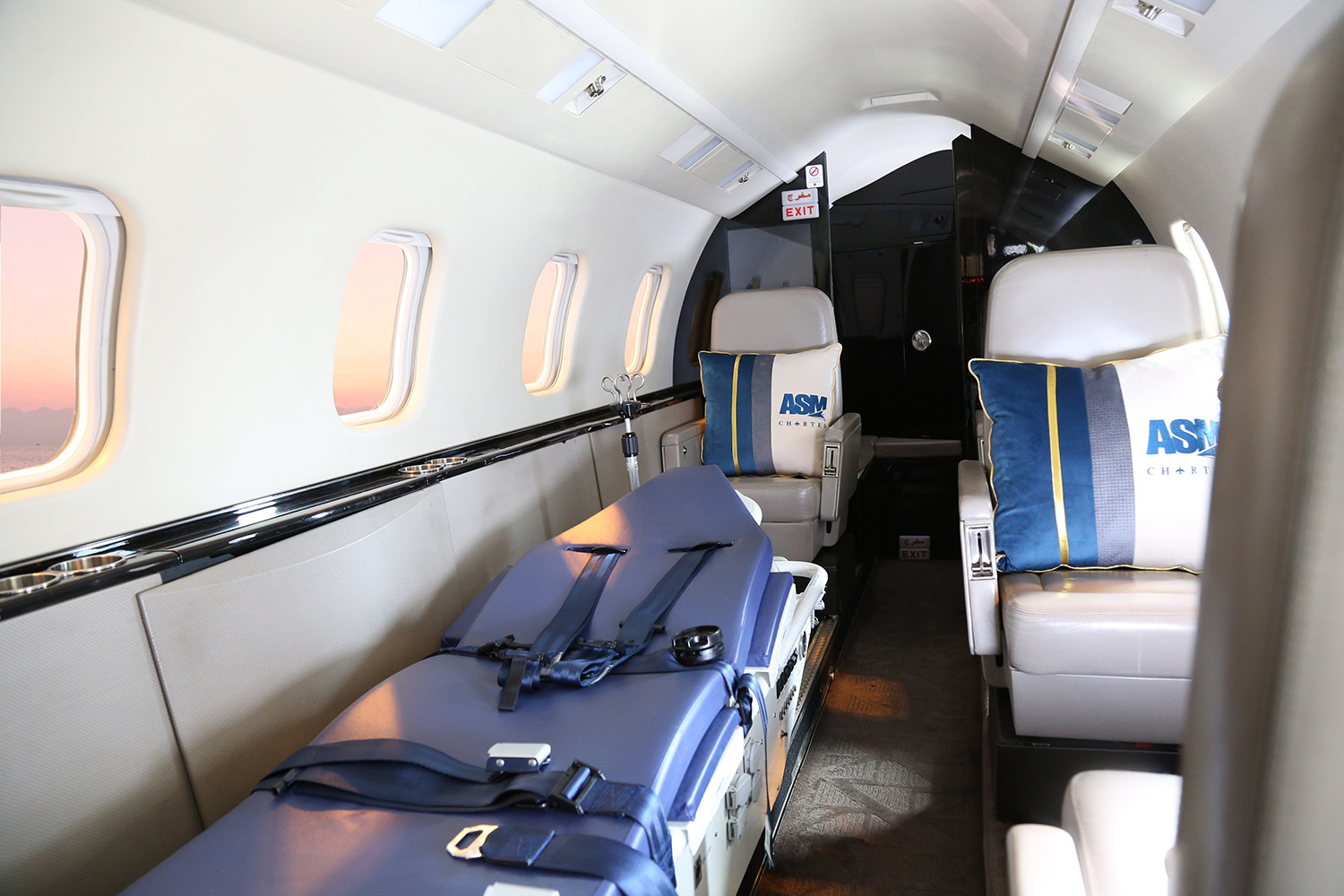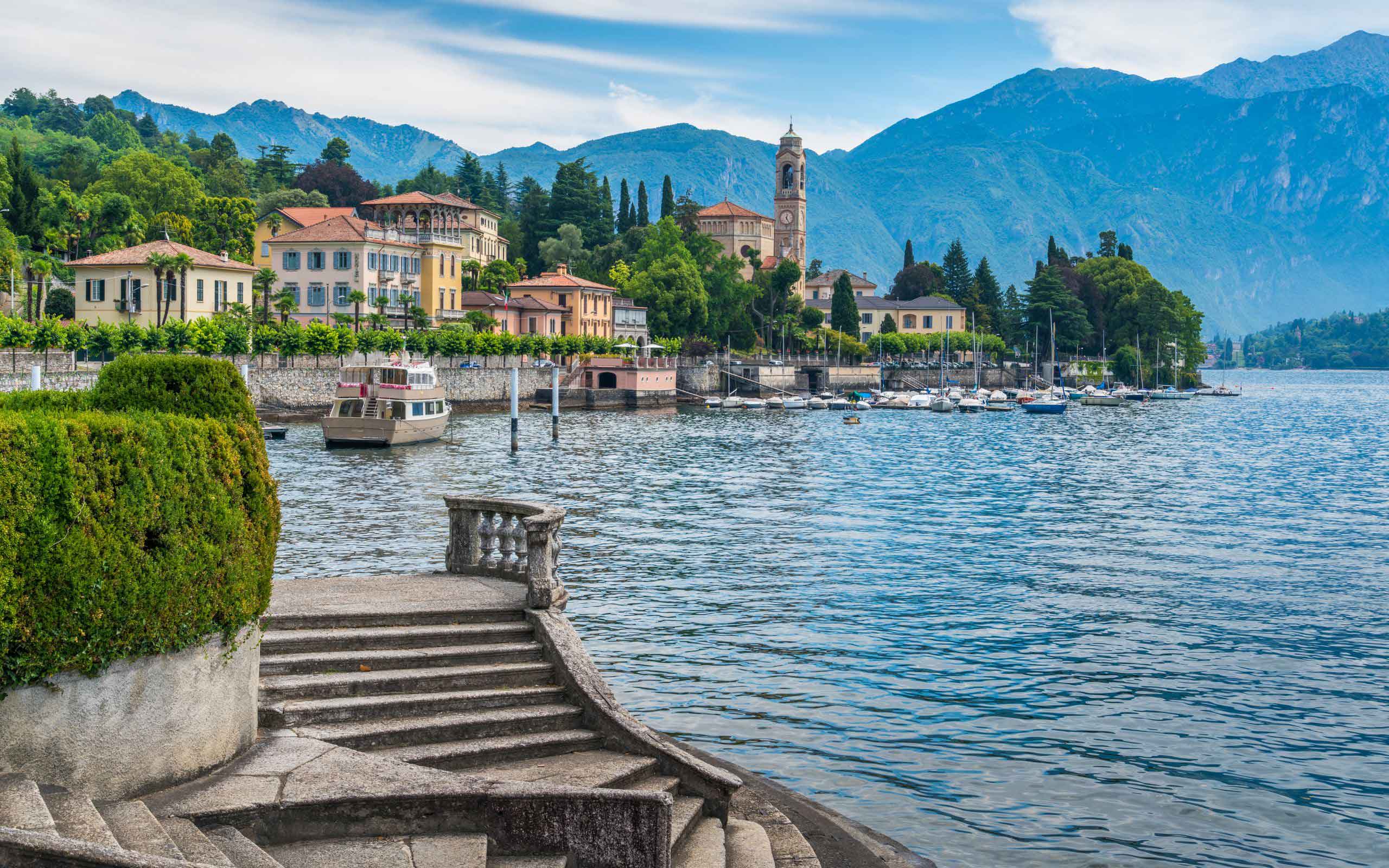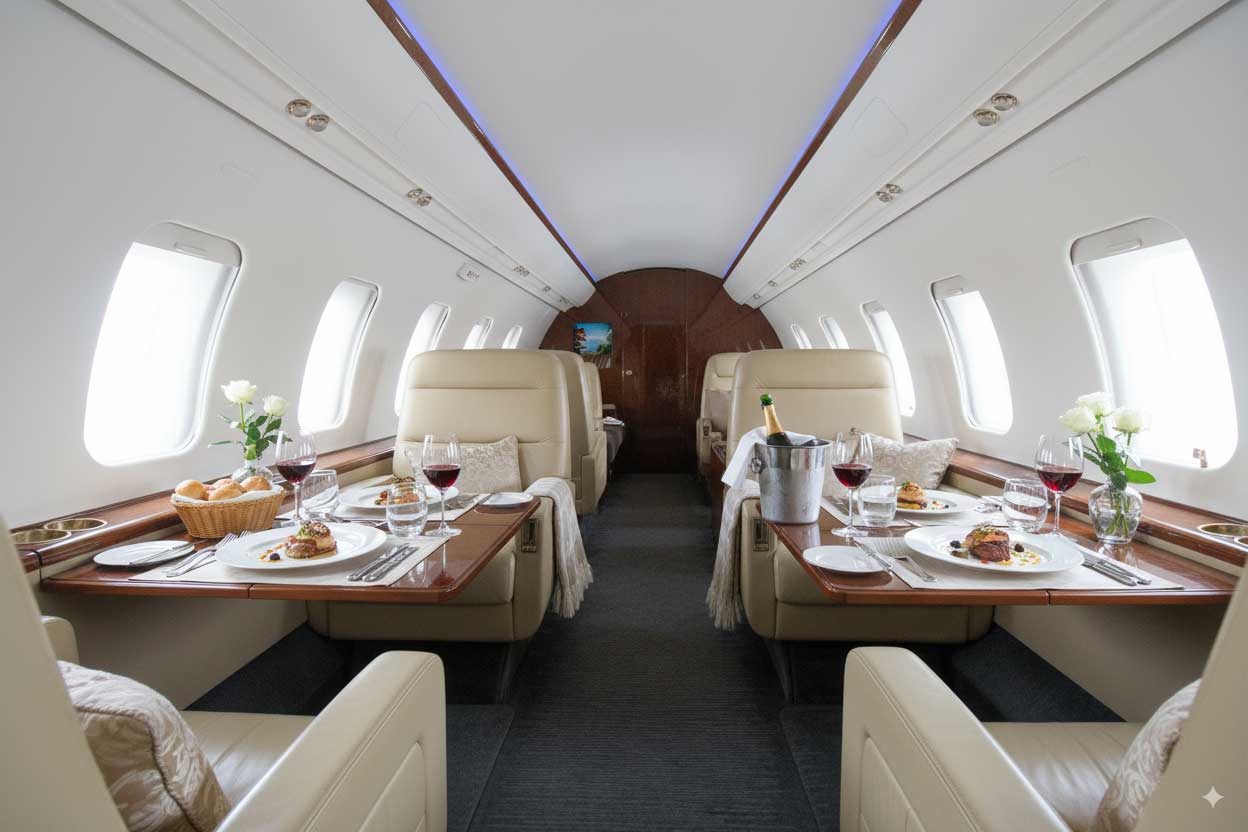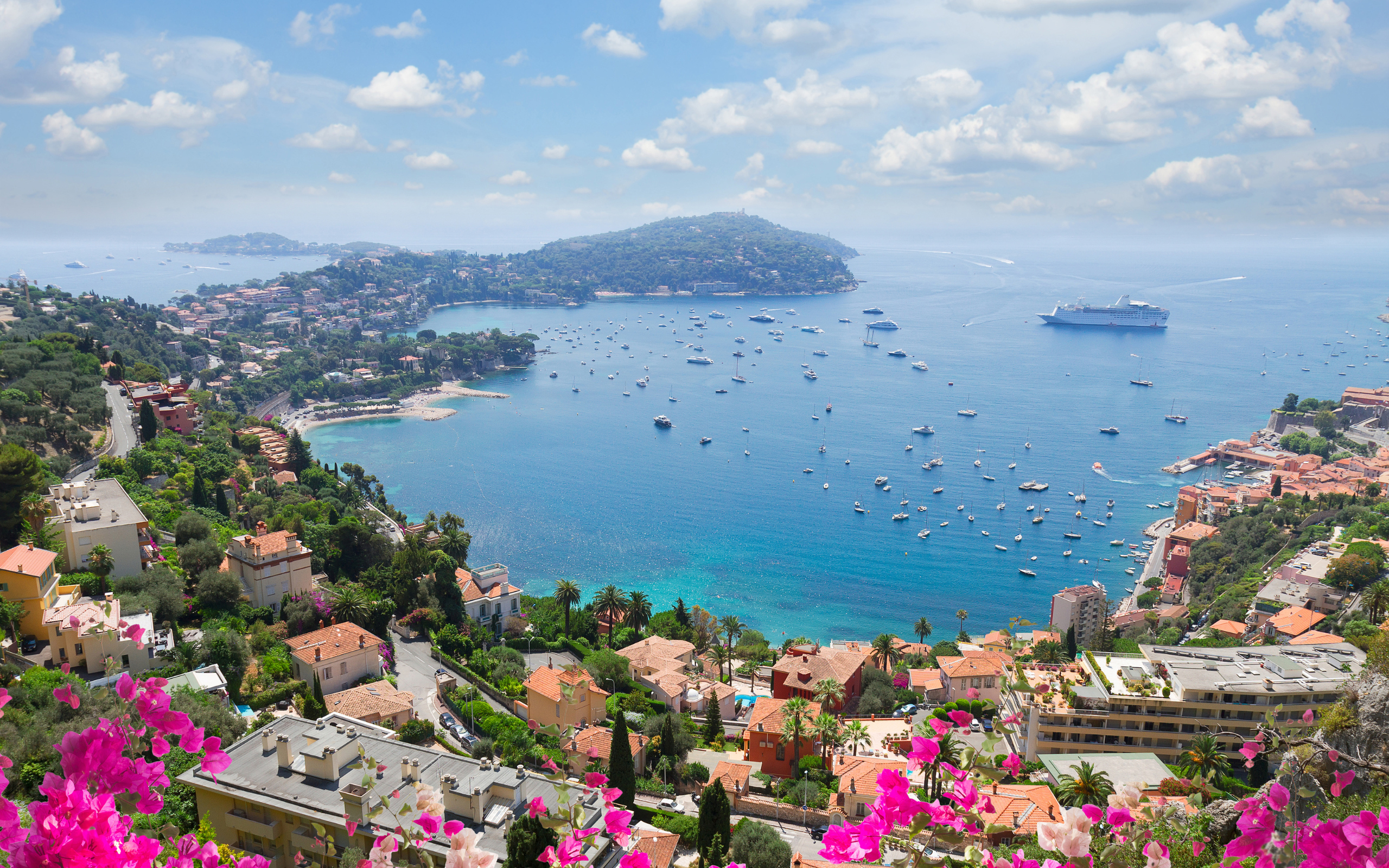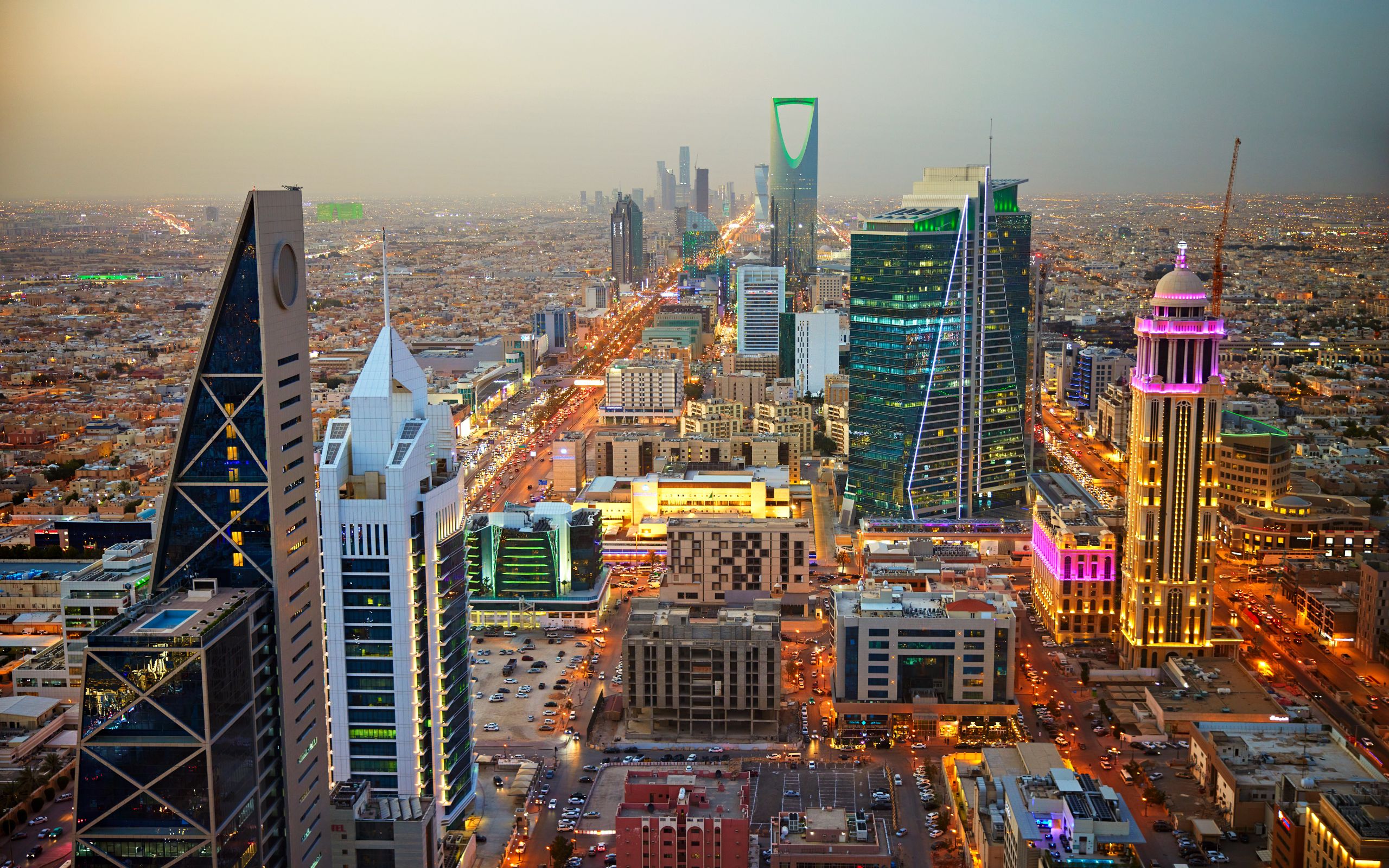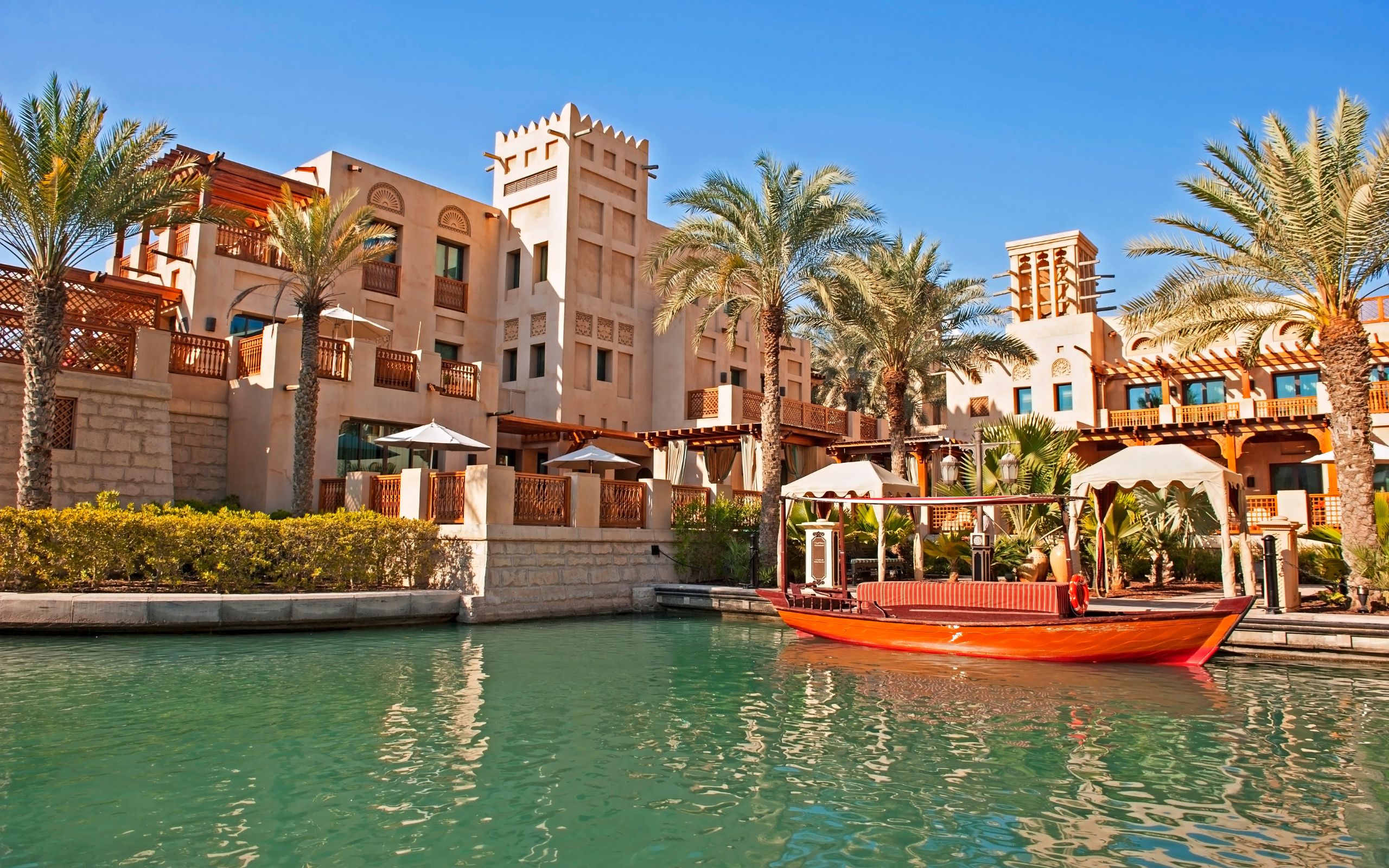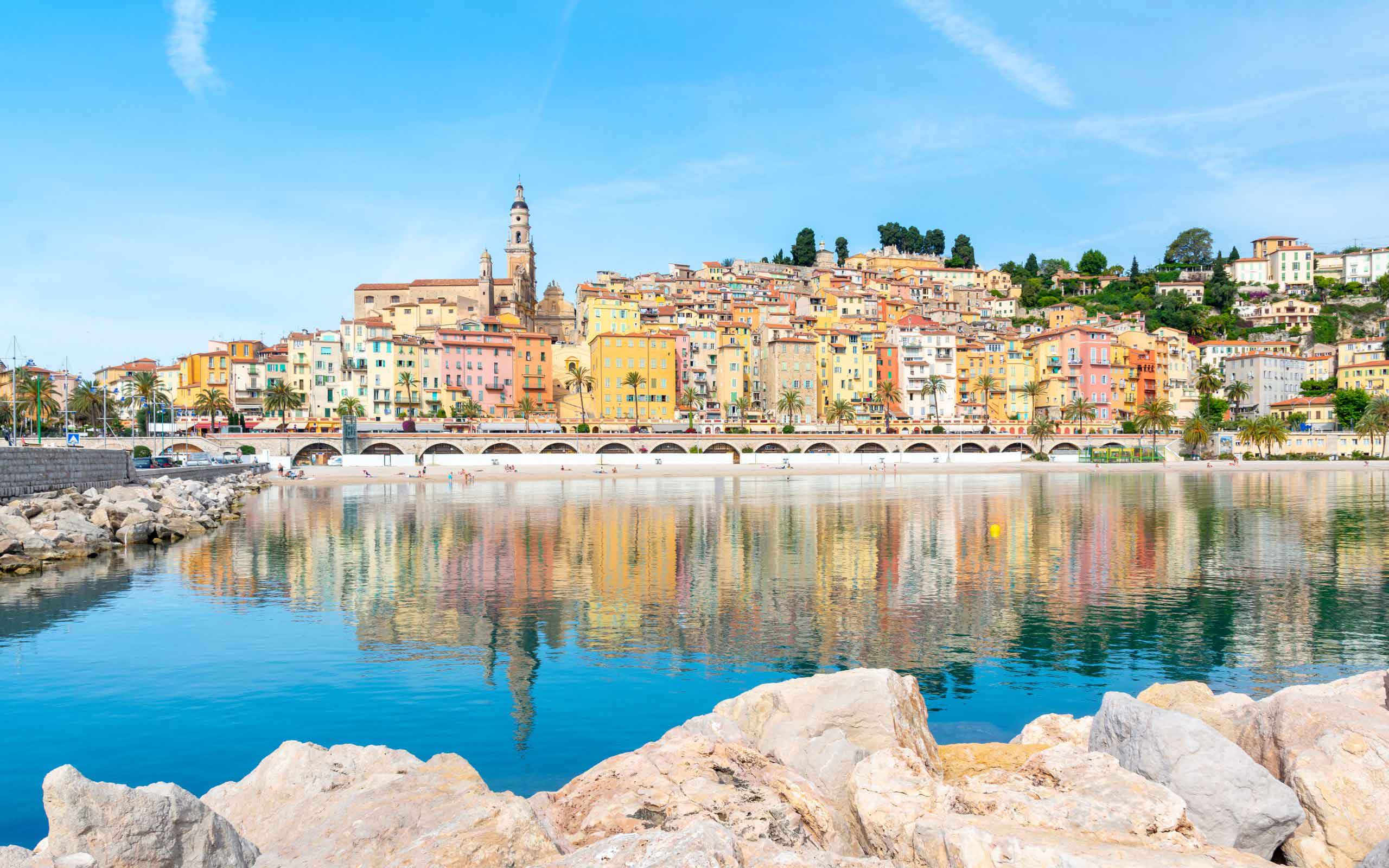Milan is a vibrant city known for its rich history, stunning architecture, and influential fashion scene. Visitors can explore a mix of cultural landmarks and modern attractions that showcase the city’s unique charm. From the breathtaking Duomo to the celebrated opera house, La Scala, there is a wealth of activities that cater to art lovers, food enthusiasts, and history buffs alike.
Table of Contents
Those who wish to dive deeper into Milan’s heritage can discover hidden gems like the historic Piazza dei Mercanti, which was a bustling centre during the Middle Ages. Art lovers won’t want to miss Leonardo da Vinci’s masterpiece, ‘The Last Supper,’ housed in a convent. The city’s lively streets also invite travellers to indulge in delicious Italian cuisine and vibrant nightlife.
With so many wonderful experiences waiting to be discovered, Milan promises an unforgettable journey filled with sights and experiences. Whether strolling through its historic squares or enjoying a meal in a chic restaurant, there’s always something new to explore.
Iconic Landmarks
Milan is home to many famous landmarks that showcase its rich history and culture. Three of the must-see sites include the Duomo di Milano, Galleria Vittorio Emanuele II, and Sforza Castle. Each offers a unique glimpse into the city’s architectural beauty and vibrant life.
Duomo di Milano
The Duomo di Milano, or Milan Cathedral, is one of the largest and most famous churches in the world. Its stunning Gothic architecture features over 3,400 statues and 135 spires, creating a breathtaking skyline.
Visitors can explore its intricately designed facade and go inside to admire the impressive stained glass windows.
The rooftop provides spectacular views of the city, making it a popular spot for tourists.
Entry to the cathedral is free, but there is a fee to access the rooftop.
Galleria Vittorio Emanuele II
The Galleria Vittorio Emanuele II is a beautiful shopping arcade that connects Piazza del Duomo and Piazza della Scala. Known for its elegant glass dome and mosaic floors, it is one of the oldest shopping malls in the world.
Shoppers will find luxury boutiques and cafes lining the arcade.
It is a prime spot for enjoying an espresso while people-watching.
The Galleria also hosts various events throughout the year, adding to its lively atmosphere.
Visitors should not miss taking a photo on the famous bull mosaic, believed to bring good luck.
Sforza Castle
Sforza Castle, or Castello Sforzesco, is a historic fortress located in the heart of Milan. Originally built in the 15th century, it served as a residence for the ruling Sforza family.
Today, the castle houses several museums and art collections, including works by Michelangelo and Leonardo da Vinci.
The castle grounds are perfect for a leisurely stroll or a picnic, with beautiful gardens to enjoy.
Guided tours provide insights into its rich history, making it a worthwhile stop for history enthusiasts.
Visitors are encouraged to explore both the interior and exterior of this iconic landmark.
Museums and Art
Milan is home to a rich array of museums and art galleries that showcase its cultural heritage. Visitors can find masterpieces spanning different periods and styles. Below are some key highlights that art lovers should not miss.
Pinacoteca di Brera
The Pinacoteca di Brera is one of Milan’s most important art galleries. Located in the heart of the city, it holds an impressive collection of Italian Renaissance art. Visitors can admire works by renowned artists such as Caravaggio, Mantegna, and Hayez.
The museum’s architecture itself is a marvel, featuring beautifully decorated rooms. One of the highlights is The Kiss by Hayez, which symbolizes Italian unification. Regular exhibitions enhance the visitor experience and provide fresh insights into art and history.
The Last Supper
The Last Supper, painted by Leonardo da Vinci, is a must-see for anyone visiting Milan. This famous mural is located in the refectory of the Convent of Santa Maria delle Grazie. It depicts Jesus’ last meal with his disciples, capturing their emotional responses.
Visiting the mural requires advance booking due to its popularity. The painting is notable for its size and detail, showcasing da Vinci’s skill in perspective and human emotion. Restoration efforts have helped preserve its beauty, making it an essential stop for art enthusiasts.
Museo del Novecento
Museo del Novecento focuses on 20th-century Italian art. Located near the Duomo, this museum features a collection that highlights major movements, including Futurism and Metaphysical painting.
Notable pieces by artists such as Boccioni and Morandi can be viewed here. The museum offers well-curated exhibitions that change frequently, making each visit unique. Its modern design enhances the experience, offering spectacular views of the surrounding area.
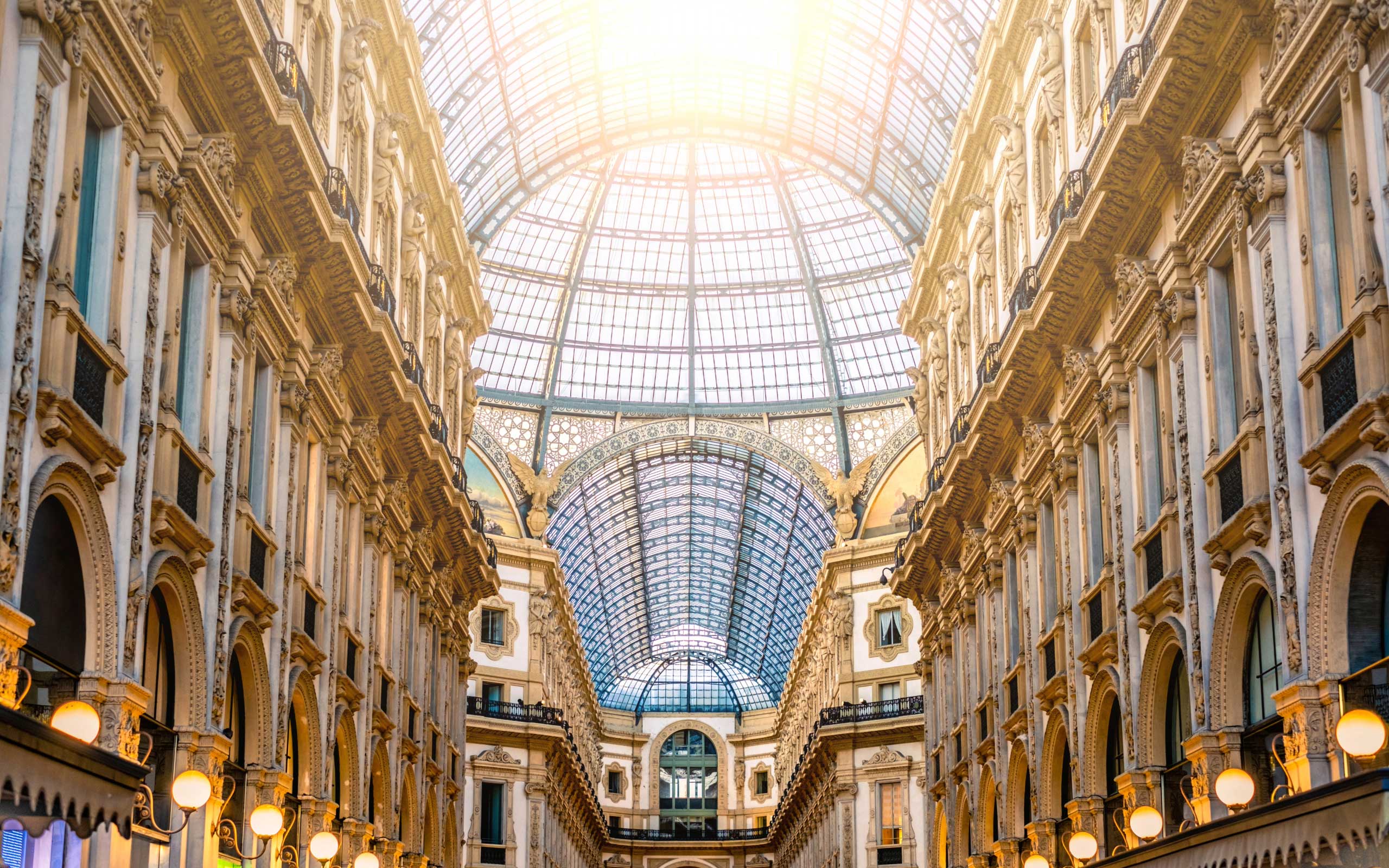
Shopping Districts
Milan is famous for its shopping, offering a mix of high-end luxury and trendy boutiques. Each district has its own unique vibe and selection of stores. Here are key shopping areas that every visitor should explore.
Quadrilatero della Moda
Quadrilatero della Moda, also known as the Fashion Quadrilateral, is a must-visit for luxury shoppers. This area includes the streets of Via Montenapoleone, Via della Spiga, Via Manzoni, and Corso Venezia.
Highlights:
- High-End Brands: Visitors will find flagship stores for brands like Gucci, Prada, and Versace.
- Elegant Atmosphere: The streets are lined with stylish window displays and stunning architecture.
- Cafés and Restaurants: After shopping, visitors can relax in chic cafés offering exquisite Italian pastries and coffee.
Corso Buenos Aires
Corso Buenos Aires is one of the longest shopping streets in Europe. It features a variety of retail shops, catering to different budgets and tastes.
Features:
- Wide Selection: The street is filled with popular brands, from Zara to H&M, making it accessible to all shoppers.
- Variety of Stores: Besides clothing, visitors can find electronics, shoes, and home goods.
- Atmosphere: The lively street is perfect for a casual day of shopping.
Porta Ticinese
Porta Ticinese offers a unique shopping experience with a blend of vintage and contemporary styles. This area is known for its trendy boutiques and local markets.
Notable Aspects:
- Vintage Shops: Shoppers can discover unique second-hand pieces, perfect for finding one-of-a-kind items.
- Local Designers: Many up-and-coming designers showcase their work in small shops, making it a great place to support local talent.
- Vibrant Scene: The area is lively, with street vendors and cafés, adding to the cultural experience of shopping.
Cultural Experiences
Milan offers rich cultural experiences that highlight its artistic and historical significance. Two must-visit locations are La Scala Opera House and the Navigli District. Each site provides a unique glimpse into the city’s vibrant culture and history.
La Scala Opera House
La Scala is one of the most famous opera houses in the world. Opened in 1778, it has hosted many legendary performances. Visitors can take guided tours to learn about its history and architecture.
The interior boasts stunning decor, including lavish chandeliers and ornate boxes for viewing performances. Attending a show at La Scala is a memorable experience. It showcases world-class opera and ballet, attracting top artists from around the globe. Tickets can be hard to get, so booking in advance is recommended.
Navigli District
The Navigli District is known for its picturesque canals and lively atmosphere. This area was designed in the 12th century and has a long history tied to trade. Today, it is a hub for art, dining, and nightlife.
Visitors can stroll along the canals lined with charming cafes and boutiques. The district is also famous for its vibrant street art. Many local artists showcase their work in galleries throughout the area. A great way to experience Navigli is by joining a food tour to taste local dishes and wines.
Parks and Recreation
Milan offers a rich variety of parks and gardens that provide a serene escape from city life. Two notable options are Sempione Park and Indro Montanelli Public Gardens. Each location showcases greenery, recreational activities, and a chance to relax in nature.
Sempione Park
Sempione Park is a vast green space located behind the historic Sforzesco Castle. Spanning 95 acres, it invites visitors to explore its well-maintained paths and open lawns.
Key Features:
- Arco della Pace: A stunning archway that serves as a focal point of the park.
- Spacious lawns: Perfect for picnics, leisurely walks, and sports activities.
- Cafés: Small eateries offer refreshments for those enjoying a day outdoors.
It is a popular spot for locals and tourists alike, making it a vibrant social hub.
Indro Montanelli Public Gardens
Indro Montanelli Public Gardens is a beautifully landscaped area situated in the heart of Milan. Known for their historical significance, the gardens have been a favourite among residents for decades.
Key Features:
- Botanical Collections: Features a wide variety of plants and flowers.
- Playgrounds: Family-friendly areas for children to enjoy.
- Cultural Events: Hosts concerts and exhibitions throughout the year.
Visitors appreciate the calm atmosphere and the chance to immerse themselves in nature while being close to the city’s busy life.
Gastronomy and Nightlife
Milan offers a rich experience in gastronomy and nightlife, blending tradition with modern tastes. Two prime areas to explore are the Brera District, known for its charming atmosphere and fine dining, and Navigli, famous for its lively nightlife and diverse culinary scene.
Brera District
The Brera District is one of Milan’s most artistic neighbourhoods. It features quaint streets lined with galleries, boutiques, and restaurants. Visitors can find a mix of classic Italian cuisine and contemporary dishes.
Popular dining spots often include:
- Trattoria Milanese: Known for risotto and local wines.
- Pizzeria Brera: Offers classic wood-fired pizzas.
Many restaurants provide outdoor seating, perfect for enjoying the ambience. The area is also home to several wine bars where patrons can taste regional wines, enhancing their gastronomic journey.
Navigli Nightlife
Navigli is the hub of nightlife in Milan, famous for its picturesque canals and vibrant scenes. It comes alive at night with bars, clubs, and a lively street atmosphere.
Highlights include:
- Street Food Market: This market attracts both locals and tourists, offering a variety of food stalls and drinks.
- Bars and Clubs: Many places feature live music and dance floors, catering to diverse tastes.
Navigli’s atmosphere encourages socializing, making it easy to enjoy a night out. Visitors often hop from one venue to another, sampling different foods and drinks throughout the night.
Day Trips from Milan
Milan serves as an excellent base for exploring stunning nearby destinations. Two popular options include Lake Como and Cinque Terre, both offering unique experiences that attract visitors year-round.
Lake Como
Lake Como is famous for its breathtaking scenery and charming towns. Just a short train ride from Milan, it offers stunning views of the mountains and luxurious villas along the shore.
Visitors can explore towns like Bellagio and Varenna. Bellagio, known as the “pearl of Lake Como,” features picturesque streets and beautiful gardens. Varenna offers a quieter, more authentic experience with its historic architecture and lakefront promenade.
Activities include boat tours, hiking scenic trails, and tasting local cuisine in lakeside restaurants. The serene atmosphere and breathtaking views make Lake Como a must-visit day trip from Milan.
Cinque Terre
Cinque Terre is a collection of five colourful fishing villages perched on cliffs along the Ligurian Sea. Reaching this UNESCO World Heritage site from Milan takes a couple of hours, but the stunning sights are worth the trip.
Each village has its unique charm. Monterosso al Mare features sandy beaches, while Vernazza boasts a picturesque harbour. Visitors can hike the scenic trails connecting the villages for breathtaking views of the coastline.
Local cuisine includes fresh seafood and the region’s famous pesto. Cinque Terre’s vibrant landscapes and charming villages provide a memorable day trip experience from Milan.
What to do in Milan – Sample Itineraries
Visitors to Milan can enjoy a range of activities and sights based on their schedule. Here are some detailed sample itineraries for one, two, and three days in the city.
What to do in Milan for a Day
On a one-day visit, focus on Milan’s highlights. Start at the Duomo di Milano, an impressive cathedral with stunning architecture. Visitors can climb to the rooftop for panoramic city views.
Next, head to the Galleria Vittorio Emanuele II, a historic shopping gallery known for its beautiful mosaic floors. After some window shopping, visit Castello Sforzesco, a grand castle with museums and lovely gardens.
Wrap up the day at Piazza della Scala, near La Scala opera house. End the night with a traditional Italian meal at a local restaurant, enjoying classic dishes like risotto or pasta.
What to do in Milan for 2 Days
For two days, travellers can delve deeper into the city. Day one can include all the sites mentioned previously.
On the second day, visit the Santa Maria delle Grazie, home to Leonardo da Vinci’s The Last Supper. Note that reservations are essential due to high demand.
Next, explore the Brera District with its charming streets, art galleries, and cafés. The Pinacoteca di Brera showcases an impressive collection of Italian art.
In the evening, enjoy the vibrant nightlife in Navigli, known for its beautiful canals and trendy bars. This area is perfect for a relaxing stroll or an aperitivo.
What to do in Milan for 3 Days
With three days in Milan, visitors can take day trips to surrounding areas. Start with the first two days of exploring the city’s main attractions.
On the third day, take a trip to Lake Como, just an hour away by train. Visitors can enjoy a boat ride on the lake, explore the charming town of Bellagio, or visit the picturesque gardens of Villa Carlotta.
Alternatively, consider a trip to Verona, famous for its connections to Shakespeare’s Romeo and Juliet. This city offers stunning architecture and vibrant culture, making it a perfect day trip from Milan.
Attractions in Milan
On your Private Jet travel to Milan, visit the famous grand Duomo, impressive Opera house – Teatro alla Scala, Sforzesco Castle, UNESCO World Heritage Sites, Basilica di Sant’Ambrogio, Roman Colonne di San Lorenzo, San Siro Stadium, Galleria Vittorio Emanuele II – the most luxurious shopping arcade, ancient churches, great variety of museums and art galleries as you drool over a delicious Milanese meal.
1. Duomo di Milano (Milan Cathedral)
The Duomo di Milano, or Milan Cathedral, is one of the most iconic landmarks in Italy and the largest cathedral in the country. It is a masterpiece of Gothic architecture, renowned for its intricate façade adorned with statues, spires, and gargoyles. The cathedral took nearly six centuries to complete, with construction starting in 1386 and finishing in 1965. It stands as a testament to Milan’s historical and architectural heritage.
Key Points
- Gothic Architecture: The cathedral is a prime example of Gothic architecture, featuring elaborate stone carvings, flying buttresses, and a stunning façade.
- Size and Scale: It is one of the largest churches in the world, capable of holding up to 40,000 people.
- Rooftop Terraces: The rooftop offers panoramic views of Milan and allows visitors to walk among the spires and statues.
- Interior: The interior is equally impressive, with towering columns, beautiful stained glass windows, and numerous artworks.
- Madonnina: The golden statue of the Virgin Mary (Madonnina) atop the highest spire is a symbol of the city.
Suggested Duration
- 2-3 hours: This allows enough time to explore the interior, visit the archaeological area, and access the rooftop terraces.
Things to Do
- Explore the Interior:
- Admire the towering nave and the intricate stained glass windows.
- Visit the crypt where Saint Charles Borromeo is buried.
- See the numerous altars and chapels adorned with religious artworks.
- Visit the Archaeological Area:
- Explore the remains of the early Christian baptistery and other ancient artefacts beneath the cathedral.
- Rooftop Terraces:
- Take an elevator or climb the stairs to the rooftop for stunning views of Milan.
- Walk among the spires and statues, and get a close-up view of the Madonnina.
- Attend a Service:
- Experience the spiritual atmosphere by attending a mass or a special religious service.
- Learn About the History:
- Take a guided tour or use an audio guide to learn about the cathedral’s history, architecture, and significance.
- Photography:
- Capture the beauty of the cathedral’s exterior and interior. The rooftop offers excellent photo opportunities of the cityscape.
Tips for Visiting
- Book Tickets in Advance: Especially during peak tourist seasons, it’s advisable to book tickets online to avoid long queues.
- Dress Code: As it is a place of worship, modest dress is required. Shoulders and knees should be covered.
- Best Time to Visit: Early morning or late afternoon to avoid the crowds and enjoy the best lighting for photography.
- Accessibility: The cathedral is accessible to visitors with disabilities, including the rooftop terraces via elevator.
Visiting the Duomo di Milano is a must for anyone travelling to Milan, offering a blend of historical, architectural, and spiritual experiences.
2. Galleria Vittorio Emanuele II
The Galleria Vittorio Emanuele II is one of the world’s oldest shopping malls and a prime example of 19th-century architecture. Located in the heart of Milan, this elegant arcade connects Piazza del Duomo with Piazza della Scala. Designed by Giuseppe Mengoni, the Galleria was constructed between 1865 and 1877 and is named after the first king of the Kingdom of Italy, Victor Emmanuel II. The Galleria is renowned for its stunning architecture, including a magnificent glass dome, mosaic floors, and intricate ironwork.
Key Points
- Historical Significance: Named after Victor Emmanuel II, the first king of unified Italy.
- Architectural Marvel: Features a grand glass dome, intricate mosaics, and elegant ironwork.
- Luxury Shopping: Home to high-end boutiques, luxury brands, and fine dining establishments.
- Cultural Hub: Often referred to as Milan’s “living room,” it is a popular gathering place for both locals and tourists.
Suggested Duration
- 1-2 hours: This allows time to explore the shops, enjoy a meal or coffee, and appreciate the architecture.
Things to Do
1. Shop at Luxury Boutiques:
- Browse high-end stores such as Prada, Louis Vuitton, and Gucci.
- Explore Italian fashion brands and luxury goods.
2. Dine at Upscale Restaurants and Cafes:
- Enjoy a meal at renowned restaurants like Ristorante Savini.
- Have a coffee or aperitivo at historic cafes like Camparino in Galleria.
3. Admire the Architecture:
- Marvel at the stunning glass dome and ironwork.
- Walk on the intricate mosaic floors depicting the coats of arms of Italian cities.
4. Spin on the Bull’s Mosaic:
- Participate in the local tradition of spinning on the mosaic bull’s testicles for good luck, located at the centre of the Galleria.
5. Photography:
- Capture the beauty of the Galleria’s architecture, especially the glass dome and mosaic floors.
- Take photos of the elegant shopfronts and bustling atmosphere.
6. Attend Events and Exhibitions:
- Check for any special events, exhibitions, or performances that may be taking place in the Galleria.
7. Explore Nearby Attractions:
- Visit the nearby Duomo di Milano and Piazza del Duomo.
- Walk to Piazza della Scala to see the famous Teatro alla Scala.
Tips for Visiting
- Best Time to Visit: Early morning or late evening to avoid the busiest crowds and enjoy a more relaxed atmosphere.
- Dress Code: While there is no strict dress code, dressing smartly is advisable, especially if you plan to dine at upscale restaurants.
- Accessibility: The Galleria is accessible to visitors with disabilities, with smooth walkways and ramps.
- Photography: Be respectful of private property and other visitors while taking photos.
The Galleria Vittorio Emanuele II is not just a shopping destination but a historical and cultural landmark that offers a glimpse into Milan’s rich heritage and sophisticated lifestyle. Whether you’re shopping, dining, or simply admiring the architecture, a visit to the Galleria is a quintessential Milan experience.
3. The Last Supper (Il Cenacolo)
The Last Supper, known as “Il Cenacolo” in Italian, is one of Leonardo da Vinci’s most famous and revered masterpieces. This iconic mural depicts the moment Jesus announces that one of his disciples will betray him. It is located in the refectory of the Convent of Santa Maria delle Grazie in Milan. Painted between 1495 and 1498, The Last Supper is a UNESCO World Heritage site and a crucial piece of Renaissance art.
Key Points
- Historical Significance: Painted by Leonardo da Vinci during the Renaissance.
- Location: Situated in the Convent of Santa Maria delle Grazie, a UNESCO World Heritage site.
- Artistic Mastery: Renowned for its composition, use of perspective, and emotional depth.
- Preservation Efforts: Ongoing restoration to preserve the artwork from deterioration.
Suggested Duration
- 30 minutes to 1 hour: This allows enough time to view the mural, absorb its details, and explore the adjacent areas of the convent.
Things to Do
1. View the Mural:
- Admire the intricate details and emotional expressions of Jesus and his disciples.
- Note the use of perspective and how it draws the viewer’s eye towards the center of the composition.
- Observe the effects of light and shadow, which add depth and realism to the scene.
2. Learn About Its History:
- Understand the historical context and significance of the painting.
- Discover the techniques Leonardo used, including his experimental approach with tempera and oil on plaster.
- Learn about the various restoration efforts that have been undertaken to preserve the mural.
3. Explore Santa Maria delle Grazie:
- Visit the adjacent church, which is an architectural marvel in its own right.
- Marvel at the Renaissance architecture and the beautiful frescoes within the church.
- Spend some time in the serene cloisters and courtyards.
4. Take a Guided Tour:
- Join a guided tour to gain deeper insights into the artwork and its history.
- Benefit from expert commentary and anecdotes about Leonardo da Vinci and his creative process.
5. Visit the Museum:
- Explore the small museum within the convent that provides additional context and information about The Last Supper and the convent’s history.
- View other artworks and artefacts related to the period.
Tips for Visiting
- Book Tickets in Advance: Due to high demand and limited viewing slots, it is essential to book tickets well in advance, often weeks or even months ahead.
- Arrive Early: Arrive at least 15 minutes before your scheduled viewing time to ensure a smooth entry.
- Respect Viewing Time: Visitors are typically allowed a specific amount of time (usually 15 minutes) to view the mural, so make the most of it.
- Photography: Photography is usually not allowed to protect the artwork from light damage, so be sure to check the rules before your visit.
- Accessibility: The site is accessible to visitors with disabilities, with facilities in place to accommodate their needs.
The Last Supper is not just an artistic masterpiece but a profound cultural and historical experience. Visiting this iconic mural offers a unique opportunity to connect with Leonardo da Vinci’s genius and the rich heritage of the Renaissance.
4. Sforza Castle (Castello Sforzesco)
Sforza Castle, or Castello Sforzesco, is a grand medieval fortification located in Milan. Originally built in the 14th century by Galeazzo II Visconti, it was later expanded and renovated by Francesco Sforza, Duke of Milan, in the 15th century. The castle has served various roles throughout history, from a military fortress to a ducal residence. Today, it houses several museums and art collections, making it a significant cultural and historical landmark in Milan.
Key Points
- Historical Significance: Built by the Visconti family and later expanded by the Sforza family.
- Renaissance Architecture: Features elements of medieval and Renaissance architecture.
- Cultural Hub: Home to multiple museums and art collections.
- Notable Artifacts: Houses Michelangelo’s unfinished sculpture, the Rondanini Pietà.
Suggested Duration
- 2-3 hours: This allows enough time to explore the castle grounds and visit several of the museums.
Things to Do
1. Explore the Castle Grounds:
- Walk through the courtyards and admire the architecture.
- Visit the castle’s various towers and defensive structures.
- Enjoy the surrounding Parco Sempione, a large public park ideal for a leisurely stroll.
2. Visit the Museums:
- Museum of Ancient Art: View medieval and Renaissance artefacts, including sculptures, tapestries, and armoury.
- Pinacoteca (Art Gallery): Discover a collection of Renaissance paintings by artists such as Titian, Bellini, and Mantegna.
- Egyptian Museum: Explore artefacts from ancient Egypt, including mummies and statues.
- Museum of Musical Instruments: See a diverse collection of historical musical instruments.
- Pietà Rondanini Museum: Admire Michelangelo’s last, unfinished sculpture, the Rondanini Pietà.
3. Attend Exhibitions and Events:
- Check the schedule for temporary exhibitions, cultural events, and concerts held within the castle.
4. Learn About the History:
- Take a guided tour to gain insights into the castle’s history and its significance in Milanese culture.
- Use audio guides available at the entrance for a self-guided experience.
5. Photography:
- Capture the stunning architecture and details of the castle.
- Take photos of the scenic views from the castle’s higher points.
Tips for Visiting
- Buy Tickets in Advance: While not always necessary, purchasing tickets online can save time and ensure entry during busy periods.
- Check Museum Hours: Different museums within the castle may have varying opening hours, so plan your visit accordingly.
- Accessibility: The castle is generally accessible to visitors with disabilities, with ramps and elevators available in most areas.
- Best Time to Visit: Early morning or late afternoon to avoid the peak tourist crowds.
- Combine with Nearby Attractions: Consider visiting Parco Sempione and the Arch of Peace (Arco della Pace), both located near the castle.
Sforza Castle offers a rich blend of history, art, and culture, making it a must-visit attraction in Milan. Whether you are an art enthusiast, a history buff, or simply looking to explore a significant landmark, the castle provides a comprehensive and enriching experience.
5. Teatro alla Scala (La Scala Opera House)
Teatro Alla Scala, commonly known as La Scala, is one of the most renowned opera houses in the world. Located in Milan, Italy, it has been a leading venue for opera and ballet since its inauguration on August 3, 1778. Designed by architect Giuseppe Piermarini, La Scala has hosted many of the greatest opera singers and composers, making it a central hub for classical music and performing arts.
Key Points
- Historical Significance: Opened in 1778, La Scala has a rich history of premiering famous operas and ballets.
- Architectural Beauty: Features a neoclassical design with a lavish interior, including a grand chandelier and red velvet seats.
- Cultural Hub: Hosts a variety of performances, including operas, ballets, and concerts.
- La Scala Museum: Offers insights into the history of the theatre and its notable performances.
Suggested Duration
- 1-2 hours: For a tour of the theatre and museum. If attending a performance, plan for an additional 2-3 hours.
Things to Do
1. Attend a Performance:
- Experience world-class opera, ballet, or classical music concerts. Check the schedule and book tickets in advance.
- Enjoy the exceptional acoustics and the atmosphere of one of the most prestigious opera houses.
2. Take a Guided Tour:
- Join a guided tour to explore the theatre’s interior, including the auditorium, stage, and backstage areas.
- Learn about the history, architecture, and notable performances of La Scala.
3. Visit the La Scala Museum:
- Explore exhibits showcasing costumes, set designs, musical instruments, and memorabilia from famous performances.
- View portraits and busts of renowned composers, singers, and conductors associated with La Scala.
4. Admire the Architecture:
- Marvel at the neoclassical façade and the elegant interior design.
- Take in the grandeur of the auditorium, with its red velvet seats, gilded decorations, and impressive chandelier.
5. Learn About the History:
- Discover the stories behind some of the most famous premieres and performances that took place at La Scala.
- Understand the theatre’s role in the cultural and artistic development of Milan.
6. Photography:
- Capture the beauty of the theatre’s architecture, both inside and out.
- Respect the rules regarding photography during performances, as it is typically not allowed.
Tips for Visiting
- Book Tickets in Advance: Performances at La Scala are highly sought after, so it is advisable to book tickets well in advance.
- Dress Code: While there is no strict dress code, smart casual attire is recommended. For gala performances, more formal attire may be appropriate.
- Arrive Early: Arrive at least 30 minutes before a performance to find your seat and settle in.
- Accessibility: La Scala is accessible to visitors with disabilities, with facilities such as ramps and elevators available.
- Combine with Nearby Attractions: Consider visiting nearby landmarks such as the Galleria Vittorio Emanuele II and the Duomo di Milano.
Teatro Alla Scala is not just a venue for performances but a symbol of Milan’s rich cultural heritage. Whether attending a performance or exploring its historical significance, a visit to La Scala offers an unforgettable experience steeped in the tradition of classical music and performing arts.
6. Brera Art Gallery (Pinacoteca di Brera)
The Brera Art Gallery, or Pinacoteca di Brera, is one of Italy’s most prestigious art museums, located in the vibrant Brera district of Milan. Established in 1809 by Napoleon Bonaparte, it houses an extensive collection of Italian Renaissance and Baroque masterpieces. The gallery is situated in the Palazzo Brera, a historic building that also hosts the Academy of Fine Arts, the Braidense National Library, and the Brera Botanical Garden.
Key Points
- Historical Significance: Founded by Napoleon in 1809, it was intended to serve as a cultural institution for the public.
- Art Collection: Features works by renowned artists such as Caravaggio, Raphael, Titian, and Bellini.
- Architectural Setting: Located in the Palazzo Brera, a historic building with a rich architectural and cultural heritage.
- Educational Hub: The gallery is part of a larger complex that includes the Academy of Fine Arts and other cultural institutions.
Suggested Duration
- 2-3 hours: This allows ample time to explore the main collections and special exhibitions.
Things to Do
1. Explore the Art Collections:
- Renaissance and Baroque Masterpieces: View iconic works by artists like Raphael’s “The Marriage of the Virgin,” Caravaggio’s “Supper at Emmaus,” and Titian’s “Pietà.”
- Modern and Contemporary Art: Discover pieces from later periods, including works by Modigliani and Boccioni.
2. Visit the Academy of Fine Arts:
- Explore the historic art school associated with the gallery, which has trained numerous influential artists.
3. Stroll Through the Brera Botanical Garden:
- Take a relaxing walk in the adjacent botanical garden, which features a variety of plant species and a serene atmosphere.
4. Attend Special Exhibitions and Events:
- Check the gallery’s schedule for temporary exhibitions, workshops, and lectures that provide deeper insights into specific artists or movements.
5. Learn About Art Restoration:
- Visit the restoration laboratories to see how experts work to preserve and restore artworks.
6. Utilize Educational Resources:
- Make use of audio guides, brochures, and guided tours to enhance your understanding of the artworks and their historical context.
7. Photography:
- Capture the beauty of the gallery’s architecture and the stunning artworks (note that flash photography is typically not allowed).
8. Shop and Dine:
- Visit the museum shop for art books, prints, and souvenirs.
- Enjoy a coffee or light meal at the gallery’s café.
Tips for Visiting
- Buy Tickets in Advance: To avoid long lines, consider purchasing tickets online ahead of your visit.
- Best Time to Visit: Early mornings or late afternoons are ideal to avoid the peak crowds.
- Accessibility: The gallery is accessible to visitors with disabilities, with elevators and ramps available.
- Combine with Nearby Attractions: After your visit, explore the charming Brera district, known for its artistic atmosphere, boutiques, and cafes.
The Brera Art Gallery offers a rich cultural experience, showcasing some of the finest works of Italian art within a historic and educational setting. Whether you are an art enthusiast or a casual visitor, the gallery provides an insightful and inspiring journey through centuries of artistic achievement.
7. Navigli District
The Navigli District is one of Milan’s most picturesque and lively areas, known for its historic canals, vibrant nightlife, and artistic ambience. The district’s name derives from the navigable canals (“navigli” in Italian) that were once crucial for trade and transportation in Milan. Today, Navigli is a popular destination for both locals and tourists, offering a blend of charming old-world scenery and contemporary cultural experiences.
Key Points
- Historical Canals: Originally designed by Leonardo da Vinci, the canals were used for irrigation and transport.
- Vibrant Atmosphere: Known for its bustling nightlife, trendy bars, cafes, and restaurants.
- Artistic Hub: Home to numerous art studios, galleries, and vintage shops.
- Cultural Events: Hosts various markets, festivals, and cultural events throughout the year.
Suggested Duration
- 2-4 hours: This allows time to explore the canals, visit shops and galleries, and enjoy a meal or drink.
Things to Do
1. Stroll Along the Canals:
- Walk along the Naviglio Grande and Naviglio Pavese, the two main canals, and enjoy the scenic views.
- Admire the historic bridges and waterside buildings.
2. Visit Art Studios and Galleries:
- Explore the many art studios and galleries showcasing contemporary and traditional works.
- Check out the exhibitions and meet local artists.
3. Shop at Vintage and Boutique Stores:
- Browse unique vintage shops, boutiques, and antique stores for one-of-a-kind finds.
4. Enjoy the Nightlife:
- Experience the vibrant nightlife with numerous bars, pubs, and live music venues.
- Try the local aperitivo tradition, where drinks are accompanied by a buffet of snacks.
5. Dine at Local Restaurants:
- Savour Italian cuisine at one of the many restaurants along the canals.
- Enjoy outdoor dining with a view of the water.
6. Attend Cultural Events:
- Participate in the monthly Navigli Antique Market, held on the last Sunday of each month.
- Look out for seasonal festivals, art fairs, and live performances.
7. Take a Boat Tour:
- Embark on a guided boat tour to learn about the history and significance of the canals.
- Enjoy a leisurely cruise and see the district from a different perspective.
8. Visit the Basilica of Sant’Eustorgio:
- Explore this historic church located near the Naviglio Pavese, known for its beautiful architecture and art.
Tips for Visiting
- Best Time to Visit: The evening is particularly lively, especially on weekends. However, daytime visits offer a more relaxed atmosphere for exploring shops and galleries.
- Public Transport: Easily accessible by metro (Porta Genova station) and tram. Walking or cycling are also great ways to explore the area.
- Dress Comfortably: Wear comfortable shoes for walking along the cobblestone streets and canals.
- Safety: While the district is generally safe, be mindful of your belongings, especially in crowded areas.
The Navigli District offers a unique blend of historical charm and modern vibrancy, making it a must-visit destination in Milan. Whether you’re interested in art, food, nightlife, or simply enjoying a scenic stroll, Navigli provides a rich and diverse experience.
8. Piazza del Duomo
Piazza del Duomo is the central square of Milan, Italy, and one of the city’s most iconic and visited landmarks. It is dominated by the magnificent Milan Cathedral (Duomo di Milano), one of the largest and most intricate Gothic cathedrals in the world. The square is not only a hub for tourists but also a focal point for local life, surrounded by historic buildings, shops, cafes, and significant cultural sites.
Key Points
- Central Landmark: Home to the Milan Cathedral, a masterpiece of Gothic architecture.
- Historical Significance: The square has been a central gathering place for centuries.
- Cultural Hub: Surrounded by important buildings such as the Royal Palace of Milan and the Galleria Vittorio Emanuele II.
- Vibrant Atmosphere: A lively area with street performers, events, and a bustling crowd.
Suggested Duration
- 1-2 hours: To explore the main attractions around the square. More time may be needed if visiting museums or the cathedral interior.
Things to Do
1. Visit the Milan Cathedral (Duomo di Milano):
- Explore the Interior: Admire the stunning stained glass windows, towering columns, and numerous artworks.
- Rooftop Terraces: Climb to the rooftop for panoramic views of Milan and a close-up look at the cathedral’s spires and statues.
- Crypt and Archaeological Area: Discover the remains of the earlier church and ancient artifacts beneath the cathedral.
2. Galleria Vittorio Emanuele II:
- Shopping and Dining: Browse luxury boutiques and enjoy a meal or coffee in the historic shopping arcade.
- Architecture: Marvel at the glass dome, intricate mosaics, and elegant ironwork.
3. Royal Palace of Milan (Palazzo Reale):
- Art Exhibitions: Visit the palace’s art exhibitions, which often feature works from prominent artists and historical collections.
- Historical Significance: Learn about the palace’s role in Milan’s history and its architectural evolution.
4. Museo del Novecento:
- Modern Art: Explore the museum dedicated to 20th-century art, featuring works by Italian and international artists.
- Views of the Duomo: Enjoy unique views of the cathedral from the museum’s windows.
5. Monument to Victor Emmanuel II:
- Historical Monument: See the equestrian statue dedicated to the first king of unified Italy, located in the centre of the square.
6. Street Performers and Events:
- Entertainment: Enjoy performances by street artists and musicians that often animate the square.
- Special Events: Check for any special events or public gatherings taking place in the square.
7. Photography:
- Iconic Shots: Capture the grandeur of the Duomo, the bustling activity, and the architectural beauty of the surrounding buildings.
Tips for Visiting
- Best Time to Visit: Early morning or late afternoon to avoid the largest crowds and enjoy the best lighting for photography.
- Tickets: Purchase tickets in advance for the Duomo, especially if you plan to visit the rooftop terraces or the archaeological area.
- Dress Code: Modest attire is required for entering the cathedral; shoulders and knees should be covered.
- Safety: Be mindful of pickpockets, especially in crowded areas. Keep your belongings secure.
- Accessibility: The square and the main attractions are accessible to visitors with disabilities, with ramps and elevators available.
Piazza del Duomo is a must-visit destination in Milan, offering a blend of historical, cultural, and architectural wonders. Whether you’re exploring the majestic cathedral, shopping in the Galleria, or simply soaking in the vibrant atmosphere, the square provides a rich and memorable experience.
9. San Siro Stadium
San Siro Stadium, officially known as Stadio Giuseppe Meazza, is one of the most iconic and largest football stadiums in the world. Located in Milan, Italy, it serves as the home ground for two of Italy’s most famous football clubs, A.C. Milan and Inter Milan. The stadium is renowned for its impressive architecture, passionate fan base, and rich history of hosting significant sporting events, including FIFA World Cup matches and UEFA Champions League finals.
Key Points
- Capacity: Approximately 75,923 seats, making it the largest stadium in Italy.
- Historical Significance: Opened in 1926 and named after Giuseppe Meazza, a legendary Italian footballer.
- Home Teams: A.C. Milan and Inter Milan.
- Major Events: Hosted FIFA World Cup matches, UEFA Champions League finals, and numerous concerts.
Suggested Duration
- 1-2 hours: For a stadium tour and museum visit. More time if attending a match or event.
Things to Do
1. Stadium Tour:
- Guided Tours: Join a guided tour to explore the stadium’s key areas, including the pitch, changing rooms, press room, and VIP sections.
- Walk Through the Tunnel: Experience the players’ tunnel and imagine the excitement of entering the pitch.
2. San Siro Museum:
- Football History: Discover the history of A.C. Milan and Inter Milan through exhibits featuring trophies, jerseys, photographs, and memorabilia.
- Interactive Displays: Engage with interactive displays that provide a deeper understanding of the stadium’s history and the clubs’ achievements.
3. Attend a Football Match:
- Match Day Experience: Experience the electrifying atmosphere of a live football match. Check the schedule for A.C. Milan and Inter Milan home games.
- Fan Culture: Witness the passion of the fans, with choreographed displays and chants that create an unforgettable experience.
4. Concerts and Events:
- Live Performances: Attend concerts and other events held at the stadium. San Siro has hosted performances by international artists such as Beyoncé, U2, and Bruce Springsteen.
5. Photography:
- Iconic Shots: Capture the grandeur of the stadium’s architecture, both inside and out.
- Match Day: Take photos of the vibrant atmosphere during a match or event.
6. Shop for Merchandise:
- Official Stores: Visit the official A.C. Milan and Inter Milan stores to purchase jerseys, scarves, and other merchandise.
Tips for Visiting
- Buy Tickets in Advance: For stadium tours, museum visits, and match tickets, it’s advisable to book in advance to secure your spot.
- Arrive Early: For matches and events, arrive early to navigate security checks and find your seat.
- Public Transport: The stadium is accessible via public transport. The nearest metro station is San Siro Stadio on Line 5 (Purple Line).
- Dress Comfortably: Wear comfortable shoes for walking around the stadium and exploring its various sections.
- Safety: Be mindful of your belongings, especially during crowded events.
San Siro Stadium is more than just a football venue; it’s a cultural landmark that embodies the spirit and passion of Milanese football. Whether you’re a football enthusiast, a history buff, or simply looking to experience one of Milan’s iconic sites, a visit to San Siro offers a thrilling and memorable experience.
10. Leonardo da Vinci National Museum of Science and Technology
The Leonardo da Vinci National Museum of Science and Technology (Museo Nazionale Scienza e Tecnologia Leonardo da Vinci) in Milan is the largest science and technology museum in Italy and one of the most important in Europe. Dedicated to Leonardo da Vinci, it showcases a vast collection of scientific instruments, technological artefacts, and models based on Leonardo’s designs. The museum is housed in a former monastery and offers interactive exhibits, making it a popular destination for both adults and children.
Key Points
- Dedication: Named after Leonardo da Vinci, highlighting his contributions to science and technology.
- Collections: Features a wide range of exhibits, including models of Leonardo’s inventions, historical scientific instruments, and modern technological advancements.
- Interactive Exhibits: Offers hands-on experiences and educational workshops.
- Location: Situated in the historic Olivetan monastery of San Vittore al Corpo in Milan.
Suggested Duration
- 2-3 hours: To explore the main exhibits and participate in interactive activities.
Things to Do
1. Explore Leonardo da Vinci’s Inventions:
- Models and Drawings: View detailed models and drawings of Leonardo’s inventions, including flying machines, war devices, and mechanical creations.
- Interactive Displays: Engage with interactive exhibits that demonstrate how Leonardo’s ideas were ahead of his time.
2. Visit the Transport Section:
- Historic Vehicles: See a collection of historic vehicles, including steam engines, locomotives, and early automobiles.
- Aerospace Gallery: Explore the aerospace section with aircraft and space artefacts, showcasing the evolution of flight technology.
3. Discover the Energy and Materials Exhibits:
- Energy Production: Learn about different forms of energy production, from traditional methods to modern renewable sources.
- Material Science: Understand the properties and uses of various materials through hands-on displays.
4. Attend Educational Workshops:
- Science Labs: Participate in science labs and workshops designed for children and adults to experiment and learn about scientific principles.
- Special Programs: Check the schedule for special programs and temporary exhibitions that delve into specific scientific topics.
5. Explore the Communication and Information Technology Section:
- History of Communication: Trace the history of communication technologies, from early telegraphs to modern digital devices.
- Interactive Exhibits: Engage with interactive displays that demonstrate the impact of information technology on everyday life.
6. Visit the Maritime Pavilion:
- Ship Models: View detailed models of ships and maritime artefacts.
- Submarine Enrico Toti: Explore the interior of the Enrico Toti submarine, an actual SSK-class submarine that visitors can tour.
7. Enjoy the Outdoor Area:
- Railway and Aviation Park: Walk through the outdoor area where larger exhibits, such as trains and aircraft, are displayed.
Tips for Visiting
- Buy Tickets in Advance: To avoid long lines, consider purchasing tickets online ahead of your visit.
- Best Time to Visit: Weekday mornings are usually less crowded, providing a more relaxed experience.
- Interactive Areas: Allow extra time for interactive exhibits and workshops, especially if visiting with children.
- Accessibility: The museum is accessible to visitors with disabilities, with ramps and elevators available.
- Combine with Nearby Attractions: After your visit, explore other nearby attractions such as the Basilica of San Vittore al Corpo.
The Leonardo da Vinci National Museum of Science and Technology offers a comprehensive and engaging exploration of scientific and technological advancements. Whether you are fascinated by Leonardo da Vinci’s genius, interested in the history of technology, or looking for an educational outing, the museum provides a rich and interactive experience that appeals to all ages.
FAQs
Milan offers a wide range of experiences for visitors. From top attractions to unique activities, this section covers key questions about enjoying the city.
What are the top attractions to visit in Milan?
Some of the top attractions include the iconic Duomo di Milano, the stunning Galleria Vittorio Emanuele II, and the impressive La Scala opera house. Visitors also enjoy the art found in Santa Maria delle Grazie, home to Leonardo da Vinci’s “The Last Supper.”
How can one spend a day in Milan?
A one-day itinerary could start at the Duomo and then explore the nearby Galleria Vittorio Emanuele. After lunch, a visit to Sforzesco Castle and a stroll in Sempione Park can provide a relaxing afternoon. Finally, dinner in the Navigli District allows for a scenic evening by the canals.
What are the best activities for young adults in Milan?
Young adults often enjoy shopping in the fashion district, visiting trendy cafes, and exploring the nightlife in the Navigli area. Art and music events, as well as film festivals, also attract a younger crowd.
Can you suggest some free places to visit in Milan?
Many free places include the stunning grounds of Sforzesco Castle and the beautiful parks like Sempione Park. Visitors may also enjoy strolling through the historic streets and checking out the architecture without spending money.
Which are the must-see places in Milan that shouldn’t be missed?
Must-see places include the Duomo, which offers a rooftop view of the city, and Leonardo da Vinci’s “The Last Supper,” which requires a reservation. The vibrant Navigli District and the unique architecture of the Galleria are also not to be missed.
What are some unique nighttime activities in Milan?
At night, visitors can enjoy a walk along the Navigli canals. There are also numerous bars and restaurants offering local cuisine and aperitivo. Cultural events, like outdoor concerts and nighttime museum openings, provide further options for nighttime entertainment.
Private Jet travel to Milan on board with ASM Charter
ASM Charter will take you to Italy’s best cities on board exclusive Learjets. To book your Private Jet travel to Milan, contact our team at charter@asm.aero
Read more on the Key Benefits of Flying Private

Our Flight Support team will take care of every little detail of your private trip.
Contact sales@asm.aero to avail of services ranging from flight planning to ground handling, fuelling and concierge services at the destination.


